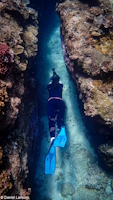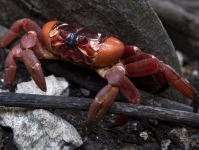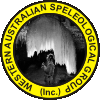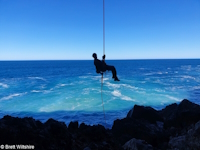 |
Expedition Images courtesy of Daniel Lansom are Here ... |
In October 2023, 12 WASG members made the trip out to Christmas Island and spent roughly 2.5 weeks caving and exploring.
The group re-located a number of features as well as exploring areas of known caves including extending and surveying the known passages of Bishop's cave.
Theres still plenty more to be done on the island!
Cheers
Dan Lansom
If you ever get a chance to go to an ASF conference (the next one is in Buchan in 2025), I highly recommend you do. As well as getting to hang out with an amazing group of somewhat like minded people, you also get to hear first hand what is going on in caving circles across Australia and the world to some extent. There are also excursions and fun activities like speleo sports.
For me, the best part of the recent conference in Ceduna was the post conference caving. I do like to be underground. Here are just a few photos of some of caves several of us from WASG visited and more importantly some of the awesome people we got to visit them with.
John Tonai-Moore 5/6/2023
The data logger program has been running for several years. On this trip I install another small diver style logger.
Darren Brooks - December 2019
 |
Expedition images courtesy of Brett Wiltshire, Danny Wilkinson and Weidi Koh are here |
The WASG Christmas Island Expedition 2018, supported by Curtin University and the Ecological Society of Western Australia, aimed to conduct an extensive stygofauna survey of Christmas Island’s subterranean ecosystems through the power of environmental DNA metabarcoding – a new genetic detection technology. Unlike many traditional surveying techniques, eDNA metabarcoding does not require direct contact with organisms and is therefore an ideal alternative method for locating elusive taxa and monitoring biodiversity in difficult-to-survey locations. As such, there is increasing interest in the use of eDNA metabarcoding as a complementary surveying tool in subterranean environments, such as cave systems. Christmas Island is one of Australia’s external territories located in the Indian Ocean and boasts extensive subterranean and submarine ecosystems that are understudied (Humphreys 2014), making it an ideal location to test the utility of eDNA metabarcoding for surveying stygofauna.
In assistance to Katrina West, a Curtin PhD student whose research focuses on the development of this technology, water and sediment samples were collected from 23 sites, including within caves and surface springs, across Christmas Island. These samples were then transported back to Curtin University, Perth to undergo further laboratory processing and determine, through the DNA present in the samples, what types of stygofauna inhabit these subterranean ecosystems. In addition, water parameters such as pH, temperature, conductivity, salinity, air saturation and dissolved oxygen were also measured on site, to determine if the community composition of stygofauna at various sites corresponds to these measures. The project aims to further develop and give prominence to the use of eDNA metabarcoding for subterranean surveying.
















